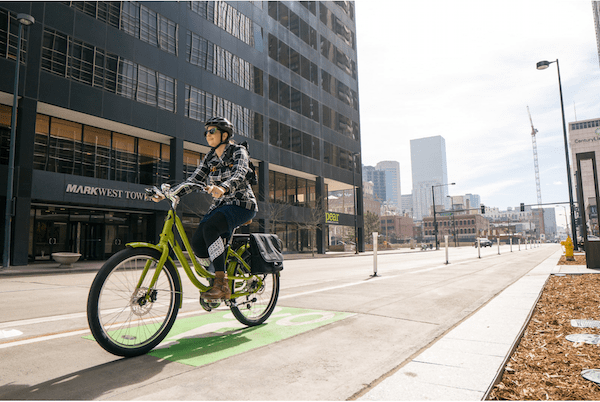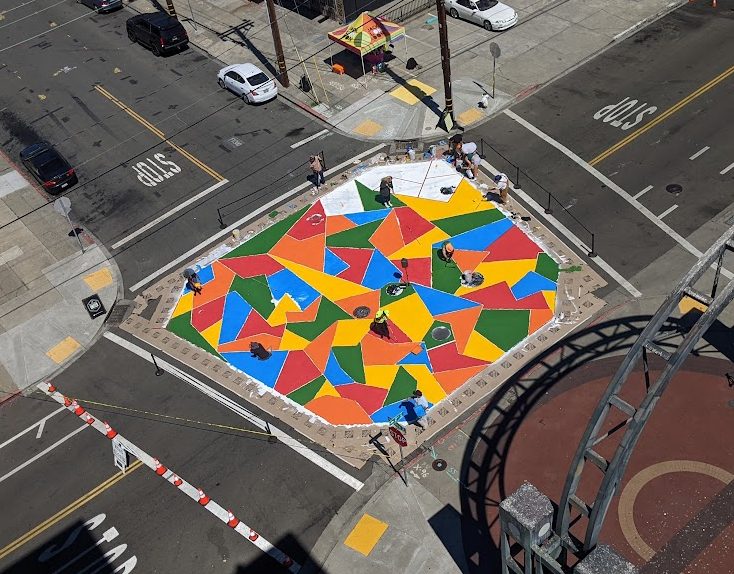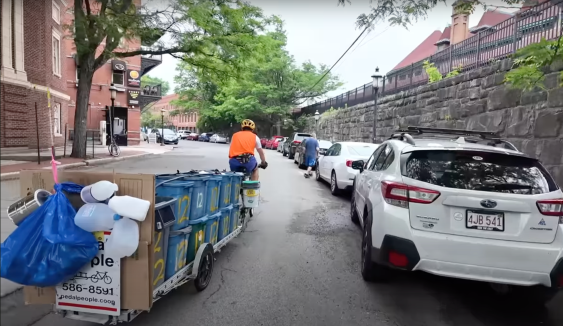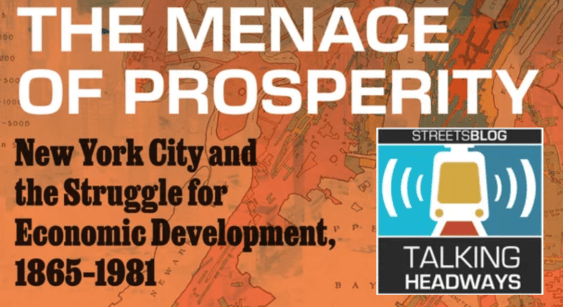Dear Presumptive Mayor Adams,
It’s wonderful that you are an avid cyclist and have great plans to make the Big Apple even more hospitable to cyclists. Unfortunately, when you take over at City Hall, you will hear loud calls to rein in cyclists, especially those on e-bikes, because of their supposed sins against pedestrians — especially elderly ones. Already, measures to curtail e-bikes feature in the deliberations of community boards.

Let’s face it, some cyclists don’t obey the traffic laws — blowing through red lights, slipping and sliding in and out of traffic, using wheelchair ramps, silently stalking sidewalks. E-bike riders, especially delivery cyclists, have been criticized as the worst offenders — because, as some have documented, they must break the traffic laws in order to earn a living.
E-bikes are too fast for sidewalks. Period. Yet, it is a brave new world and we are going to have to collectively sort out and augment space for pedestrians, e-bikers, e-scooter riders, and micro-mobility devices not yet invented — as well as for conventional cyclists whose numbers multiply daily.
What to do?
First, it would be helpful to know more about interactions between cyclists and people on sidewalks, especially the elderly. The Department of Transportation should conduct three surveys immediately: first, of cyclists riding on sidewalks, in order to ascertain their numbers and their reasons for so doing; second, of cyclist speeds and interactions with pedestrians on sidewalks, especially with the elderly; and third — and most important— of sidewalk widths, pinch points, and proportionate width of sidewalks versus the other space in the public right-of-way.
The first two surveys could be using the same methods the DOT currently uses for its bike-count and outreach surveys.
We’d learn some valuable information. Legally, children age 12 and under may ride on the sidewalk. Should an adult be allowed to chaperone them (as I did with my children when they were younger)? When is a cyclist using a sidewalk as a shortcut? A primary reason we ride is efficiency: We go door to door, take shortcuts, and use streets, paths, and greenways. Many delivery cyclists are seeking shortcuts, for example. Cycling in a driver’s world is imperfect at best — but it’s worth learning the motivation behind behavior if we seek to change it.


Cyclists, sidewalks and spacial equity
The last survey, of sidewalk space, would be the most fraught, because it goes to the heart of how car culture has shaped our urban environment. Historically, we know that New York City lost miles of sidewalk space to the encroachment of the automobile as roads were widened over decades. We need to restore wider sidewalks in places, reclaiming the public right of way for people rather than cars.
Respected urban designers have argued that 50 to 70 percent of the right-of-way should be given over to people walking, cycling, and lingering. Yet that is not the case in New York City. The typical building-to-building right-of-way for a street here is 60 feet. It consists of a 30-foot wide roadway (curb-to-curb) and 15-foot wide sidewalks. Subtracting stoops and trees, the actual walkway is maybe five to 10 feet wide, or 17 to 33 percent. Avenues are typically 100 feet wide, with 60 feet of roadway and 20 feet of sidewalk. Subtracting trees, bus stops, and such, the actual pedestrian walkway is maybe five to 15 feet wide, or a paltry 10 to 30 percent of the right-of-way. Plainly, pedestrians need more space.
In conducting its surveys, the DOT could start with points identified by the community where sidewalks are too narrow and/or where cyclists ride on the sidewalk. I’m sure that every community board in the city has a running list of crowded sidewalks, places where the curb needs to be moved in order to provide real safety. (Many have heard complaints, too, about the sidewalk space taken up by outdoor dining.) If we really want to accommodate people walking and cycling, we need to find space for them.
Streetsblog and Streetfilms have documented similar spatial-equity issues for cyclists on First and Second avenues in Manhattan. Cyclists account for a third of the traffic yet can ride in only one of the avenues’ six lanes (and the ratio of cyclists to cars is far higher on Kent Avenue in Brooklyn). The DOT’s own bike counts could provide a template for where bike lanes ought to be widened and car lanes shrunk.
Fortunately, the experience of other nations where e-bikes are more prevalent, as well as our own experience with early mopeds provides some guidance for design solutions to deal with those questions. The first National Moped Conference was held in Anaheim, Calif., in 1978, and promulgated rules on the issue. There used to be a “NO MOPED” sign on the Brooklyn Bridge, for example. This issue was and remains: faster mopeds cannot safely pass slower cyclists in the very narrow bike lane without endangering (and angering) pedestrians. By moving the bike lane to the roadbed, e-bikes now can be accommodated.

In 2007, the Institute for Transportation & Development Policy researched e-bikes in Changzhou in China. Cycling constituted more than a third of the mode split, with an increasing number of higher-speed e-bikes. Some bike lanes in the city were 16 feet wide to accommodate the huge volume of cyclists. The city carved out bike lanes on the road or sidewalk — depending on destination and width. Alternatively, the city installed U-shaped bollards in such a way that e-bikes can not pass into certain spaces. Unfortunately, they also prevented the passage of people in wheelchairs.


In 2019, the National Association of City Transportation Officials released a guide to micro-mobility that informs American policy. It recommends an e-bike speed limit of 20 mph or lower. Baltimore has an 8 mph speed limit in certain areas. Geo-fencing is suggested for prohibited areas such as campuses or parks. The guide recognizes that “street design standards may need to change to accommodate a wider array of low-to-moderate speed micromobility vehicles.” In other words, as vehicles evolve, so should streets.
Consider the Shore Parkway greenway trail under the Verrazzano Narrows Bridge with its wildly popular, but paltry, greenway. It could be a world-class promenade for people fishing, walking, cycling, and e-biking, but is too narrow, mostly because of the excessively wide roadway next to it. The high number of lanes leads to dangerous drag racing. Right-sizing this roadway and expanding the greenway would be a win-win.

So, future Mayor Adams, I am excited for the bike baton to be passed to you. Bicycles, e-bikes and e-scooters are clearly the next wave in cities. Yes, they can be scary for some — but they are liberating for others. Mayor Muriel Bowser of Washington, D.C., is outfitting some of her cops with e-bikes. She said the community wants to see officers out of their cars and on the beat — on an e-bike.
We salute your handle-bar perspective.
Michael King is an urban planner and professional traffic calmer. Follow him on Twitter at @trafficcalmer.






